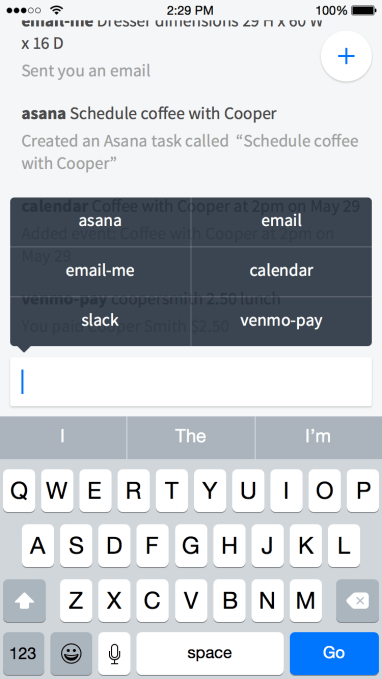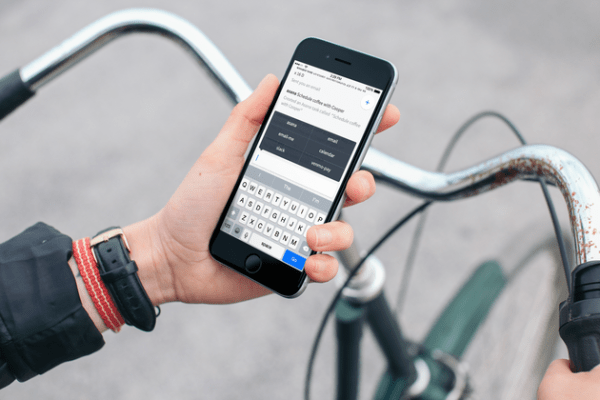If you have a bunch of apps installed on your iPhone, it can be challenging to locate the right one when it comes time to jotting something down in a hurry – like adding an item to a grocery list, making a note about something a friend said, or shooting off a quick question via email, for example. A new app called Input wants to solve the problem of having to dig around your phone for the app you need, by letting you interact quickly with a number of commonly used apps, including your email, calendar, note-taking apps, Twitter, Dropbox, Venmo, work apps like Slack and Asana, and more from a single interface.
The idea for this sort of “one-stop shop” for using your apps comes from Matthew Healy, currently a designer at Foursquare, who developed Input as a personal project.
He explains that while most of the time he spends on his phone is consuming content, like reading, listening to music, or watching video, there are other times when he just wanted to “get in and out.”
“These are the times where I want to get a task done as fast as possible, so I can finish cooking, get back to that conversation, or avoid walking into somebody on the street,” says Healy. “Input is designed to make it as fast as possible to capture information and take actions in lots of different apps, with a consistent and minimal interface.”
The interface itself is sparse and a bit geeky. It should appeal to power users or those comfortable with a command-like look-and-feel, but isn’t as user-friendly as something like the task automation utility Workflow, for instance. However, like Workflow, Input is also taking a stab at offering a different way to interact with the apps on your iPhone, without requiring you to actually locate the app in question and launch it directly.

Instead, to get started with Input, you first connect it to the services you want to use with it, like Gmail, Buffer, Slack, Todoist, Translate, Venmo, Wunderlist, Evernote, Google Calendar, Twitter, Remember the Milk, Dropbox, Asana, Feedback, or Omnifocus. Initially, you can only add a couple of these services for free. To add more, you have to buy additional services in packs of 3 for $1.99.
Afterwards, any time you launch Input, you’re presented with a keyboard where you can tap on the keyword for the app or service you want to use from a menu list that appears, and then start typing. For example, you would tap the keyword “tweet” to compose a tweet. The text box where you type will also prompt you with what information to type in next – like “Tweet text” when posting a tweet,” “event details” when creating a calendar entry, or “Note title” and “Note text” when creating a new note in Evernote.
When you’ve finished entering the text, you just press “go” and you’re done – no other app has to be launched or used.
[gallery ids="1208622,1208621,1208620"]
Healy says that when he first built Input, it was something he was planning to use just for himself. The first version was actually an SMS app, in fact, but he later realized that he wanted to add features that didn’t work within the confines of SMS.
“I wanted faster shortcuts to the different services, and autocomplete for things like to-do list projects, filenames, and email addresses,” Healy says. “I first rebuilt Input as a JavaScript-based web app, still with myself as the only user. At some point along the way, I realized it had become something that might be useful to other people.”
Healy admits that the app’s design and purpose may make it largely appealing to power users, but he’s already heard from a few less tech-savvy folks who are also finding it useful.
The app’s minimal aesthetic, meanwhile, is meant to reflect Input’s larger goal of stripping away extraneous features and focusing on the single task of capturing information.
Following a small beta launch with 100 testers, the app is now live on the App Store. Additional services may be introduced over time, based on user feedback and demand.
